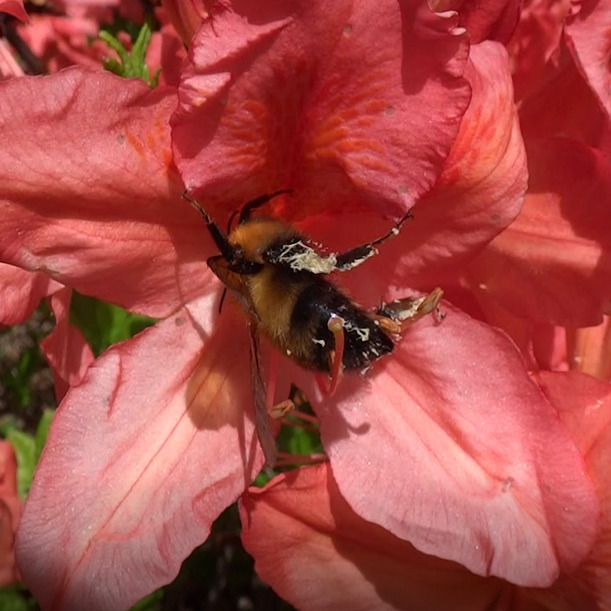Comparison of flower-visiting behaviour of bumblebees and swallowtail butterflies to the Japanese azalea (Rhododendron japonicum)
DOI:
https://doi.org/10.26786/1920-7603(2020)595Abstract
Examination of the efficacy of pollinators that are not morphologically matched to a flower’s shape can deepen our understanding of the main pollinators of a plant species. In central Japan, Rhododendron japonicum is visited much more frequently by bumblebees than by butterflies although its flower shape is more suited for pollination by large butterflies. Here, we observed flower-visiting behaviour of Bombus diversus queens and the alpine black swallowtail butterfly, Papilio maackii, and compared their efficacy as pollinators. Papilio maackii always touched the stigma during a flower visit, whereas B. diversus queens did so during just 54% of their flower visits. As bumblebees visit neighboring flowers of a R. japonicum tree in sequence not like Papilio maackii, we hypothesized that they deliver self pollen to R. japonicum so that the fruit set would be low. However, the fruit set in a bumblebee-dominated area was 72.5%, significantly higher than that by hand-pollination with self pollen (31.4%). This suggests that R. japonicum can obtain sufficient fruits by B. diversus queens although its flower shape morphologically matches to pollination by swallowtail butterflies.
Downloads
Published
2020-09-11
How to Cite
Takahashi, K., & Itino, T. (2020). Comparison of flower-visiting behaviour of bumblebees and swallowtail butterflies to the Japanese azalea (Rhododendron japonicum). Journal of Pollination Ecology, 26. https://doi.org/10.26786/1920-7603(2020)595
Issue
Section
Articles
License
Copyright (c) 2020 Keigo Takahashi, Takao Itino

This work is licensed under a Creative Commons Attribution 4.0 International License.











